Mercury, Crepuscular Rays, Orion, Galaxies
Posted: 1 March 2019
Early Thursday morning some Javelinas were photographed by our wildlife camera. These are the smallest Javelina babies we've seen here.
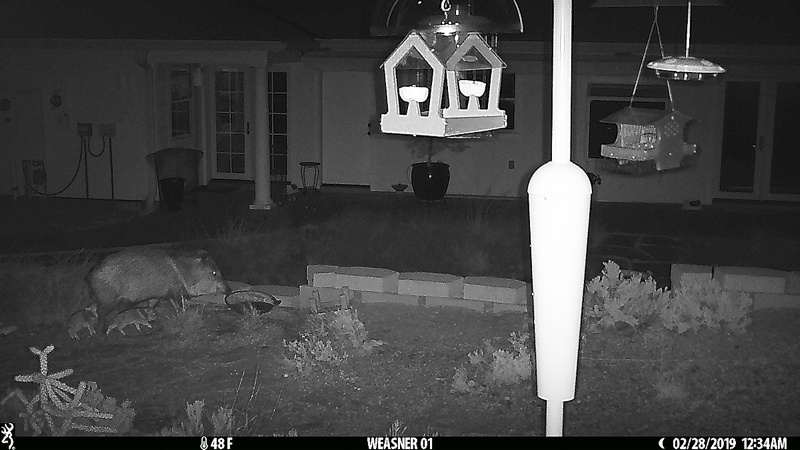
Click or tap on image for larger version
|
Open: Thursday, 28 February 2019, 1809 MST Temperature: 79°F |
Session: 1335 Conditions: Mostly clear |
Equipment Used:
12" f/8 LX600 w/StarLock
2" 24mm UWA eyepiece
2" 9mm 100° eyepiece
2" 2X Powermate
Camera:
iPhone 8 Plus>
D850 DSLR
1815 MST: LX600 ON, StarLock OFF, High Precision OFF.
1817 MST: viewed the planet Mercury, low in the western sky, 102X.
1821 MST: sunset.
Viewed Mercury, 271X and 542X, through thin clouds.
I handheld the iPhone 8 Plus over the 9mm eyepiece + 2X Powermate for these photos taken with the 1X lens and 2X telephoto lens using NightCap Camera:
1X lens
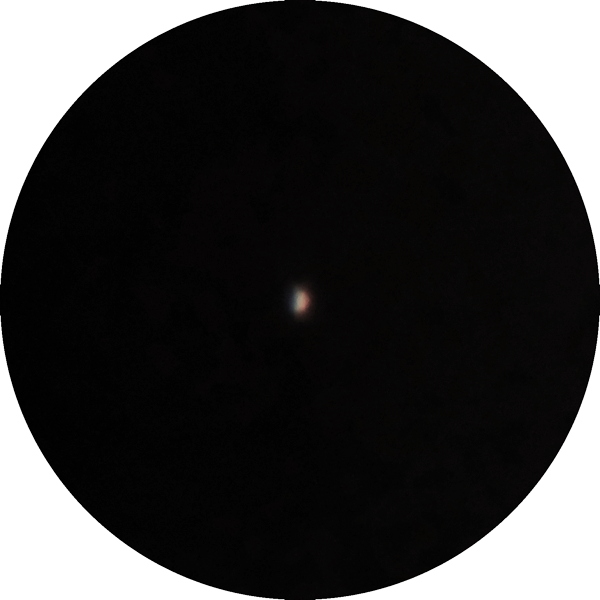
2X lens
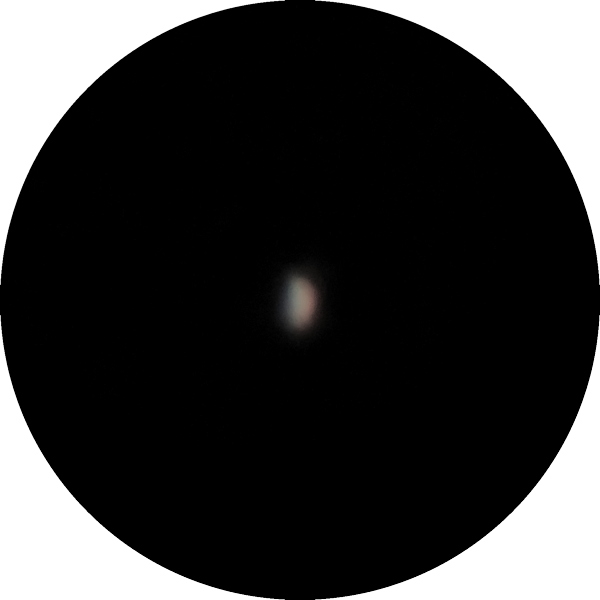
1838 MST: using the D850 DSLR with 50mm lens I took this photo of some Crepuscular Rays (f/5, 1/100sec, ISO 400):
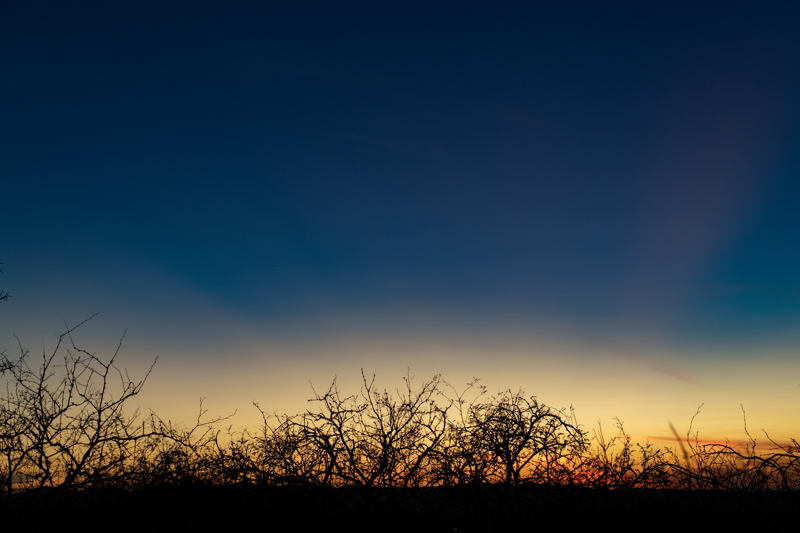
1851 MST: viewed the planet Mars, 102X. No details visible.
1854 MST: viewed M42 (the Great Nebula in Orion), 102X. The Trapezium star cluster and some nebulosity were visible 48 minutes before the end of Astronomical Twilight.
1905 MST: I then checked the positions of this night's targets for my Extragalactic Supernova Project: NGC2146, NGC2336, and NGC2403.
1918 MST: the Zodiacal Light was becoming visible. 1925 MST: took this handheld D850 DSLR photo (f/1.4, 1/2sec, ISO 3200, White Balance 4000K, FL 50mm) of the Zodiacal Light with the planet Mercury at the bottom:
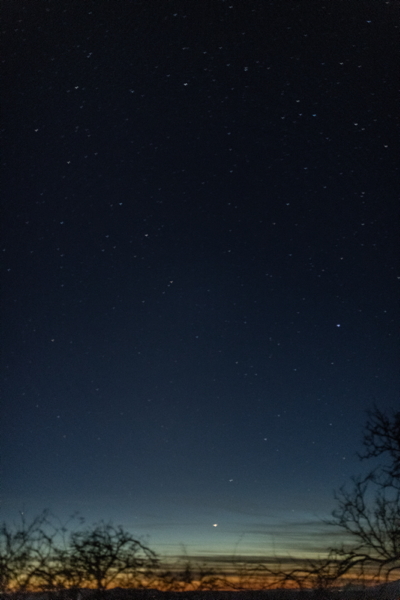
The Zodiacal Light is not as obvious in the above photo as it is in the 8mm fisheye photo I took on the previous session.
I then took this handheld D850 DSLR photo (f/1.4, 1/4sec, ISO 6400, White Balance 4000K, FL 50mm) of the constellation of Orion, which was high in the southern sky:

Next, I began preparing for galaxy imaging. I mounted the D850 DSLR at prime focus of the 12" telescope, focused on the star Regulus, locked the mirror, and SYNCed the AutoStar on Regulus.
1953 MST: High Precision ON. Slewed to NGC2146. 1956 MST: StarLock ON.
Took the following galaxy images, StarLock autoguided, 5 minutes, ISO 6400, White Balance 5000K:
NGC2146
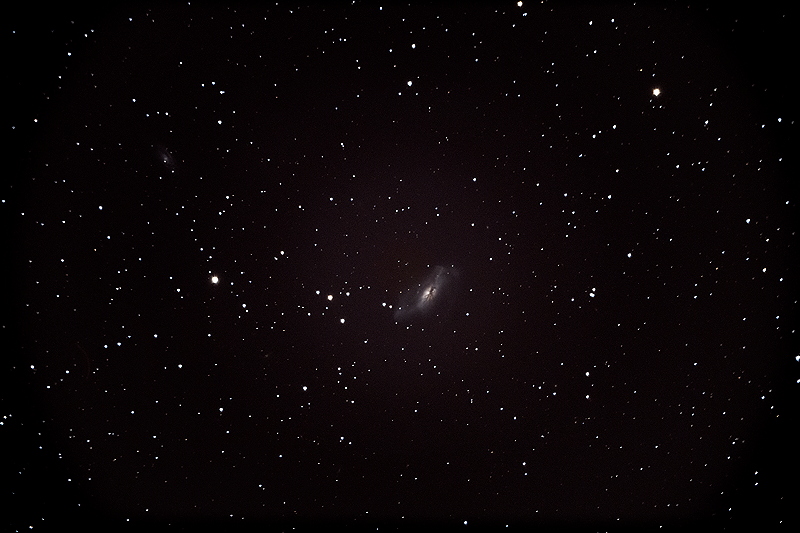
NGC2336
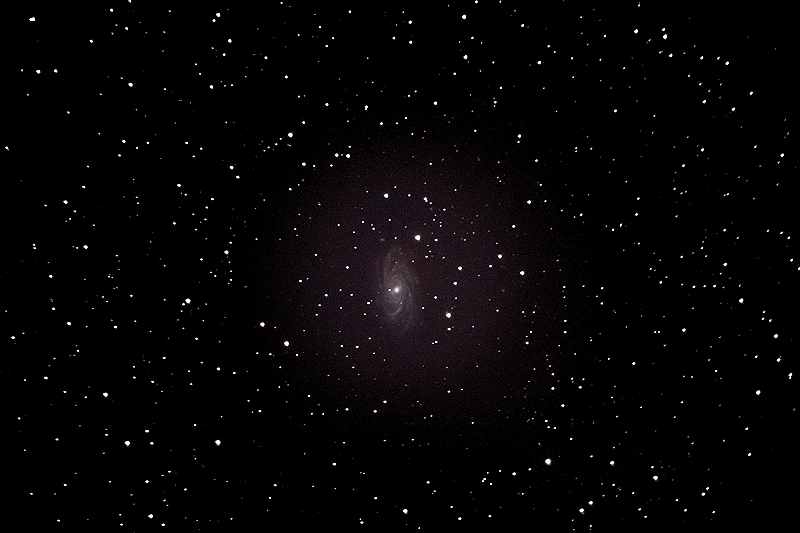
NGC2403
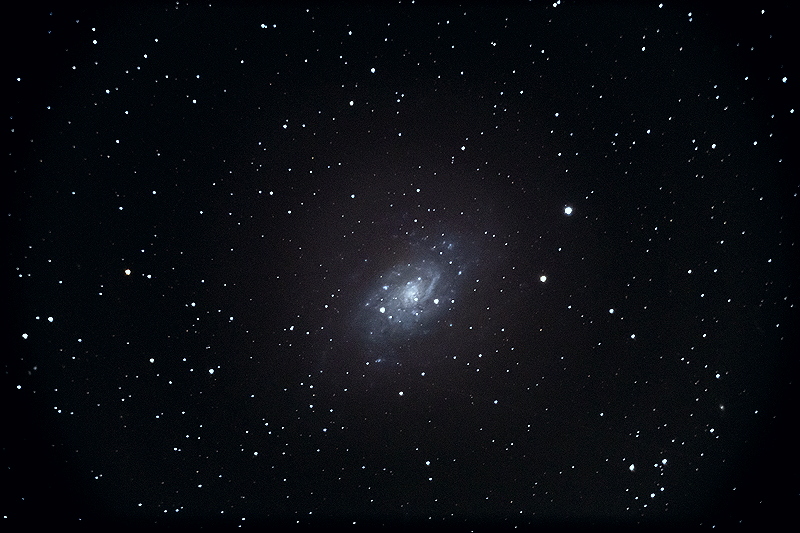
Clouds were now increasing.
2053 MST: StarLock OFF, High Precision OFF.
Viewed NGC2403 (galaxy), 102X.
2104 MST: LX600 OFF.
|
Close: Thursday, 28 February 2019, 2114 MST Temperature: 54°F |
Session Length: 3h 05m Conditions: Partly cloudy |
Comments are welcome using Email. Twitter users can use the button below to tweet this report to their followers. Thanks.
Cassiopeia Observatory Home Page
Copyright ©2019 Michael L. Weasner / mweasner@me.com
URL = http://www.weasner.com/co/Reports/2019/03/01/index.html
